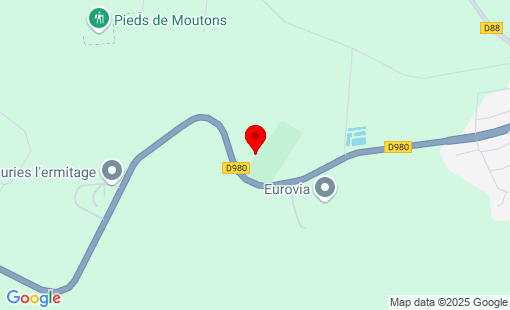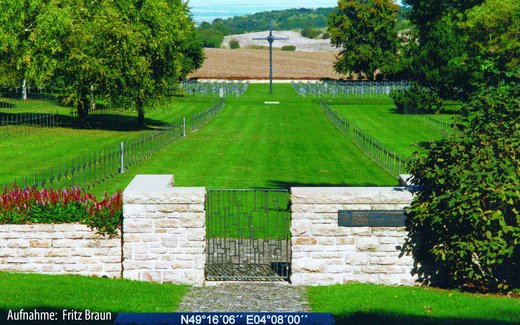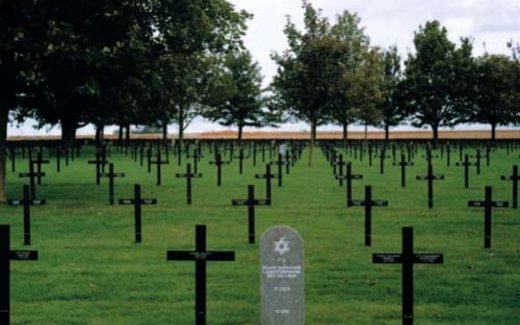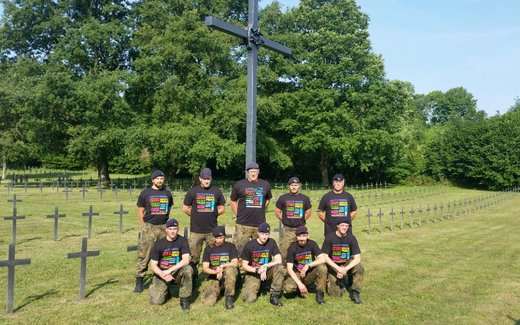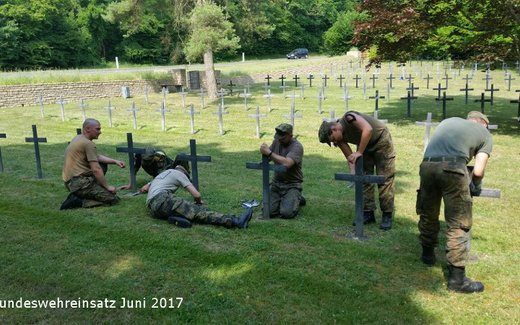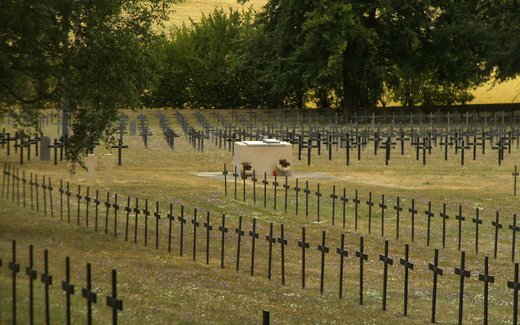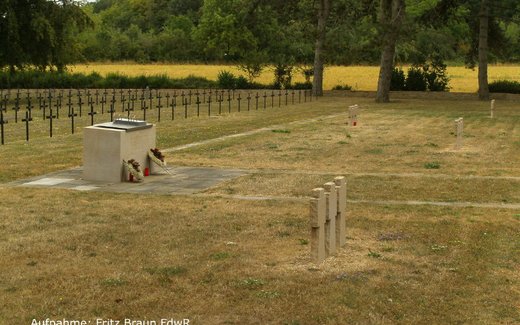France
Berru
Total Occupation: 17.567 fatalities
Total Occupation: 17.567 fatalities
Département Marne 17,556 German war dead First World War The German military cemetery Berru was established in April 1923 by the French military authorities as a collective cemetery. The dead resting here today were gathered from an area stretching from Fismes (30 kilometers west of Reims) to the Argonne (80 kilometers east of Reims) and from Chatillon on the Marne (25 kilometers southwest of Reims to Berry-au-Bac (20 kilometers northwest of Reims) and encompassing the area of more than 150 municipalities and districts. As late as 1929, several hundred fallen soldiers or those who had died in French military hospitals were temporarily buried far south of the Marne and the Seine. Only a small number fell in the summer of 1914. The number of casualties increased considerably with the German retreat from the Marne and the major French attack in the winter of 1914/1915, the autumn battle in Champagne in 1915, the French offensive in Champagne and at Chemin-des-Dames in the spring of 1917. The German offensive operations in July 1918 and the retreat battles in October of the same year claimed further lives. The fallen belonged to units whose home garrisons were located in all countries and provinces of the then German Reich. Repair work between the wars The Volksbund Deutsche Kriegsgräberfürsorge e.V. carried out the first work to improve the condition of the cemetery in 1928 on the basis of an agreement reached with the responsible French military authorities in 1926. These mainly involved the planting of greenery and the fencing of the cemetery. However, the problem of permanently marking the graves remained unresolved due to a lack of foreign currency and the outbreak of the Second World War in 1939. Final design Following the conclusion of the Franco-German War Graves Agreement of July 19, 1966, the Volksbund Deutsche Kriegsgräberfürsorge e.V. (German War Graves Commission) - with financial support from the German government - was able to begin the final design of the German military cemeteries in France from the First World War. In addition to a thorough landscaping overhaul, in which volunteers from the Volksbund youth camps were actively involved, the previous temporary wooden grave markers were replaced in 1970 with metal crosses bearing the names and dates of those buried here. Young people were also involved. They moved the cross foundations for the new crosses, which weighed 35 kilograms and were transported by the German army. In this way, young people and soldiers supported the Volksbund in fulfilling its tasks in a particularly impressive way. In addition, a new entrance with a forged gate and natural stone wing walls, which continue into an earth wall with a natural stone covering and shrubbery, was created. A high cross made of forged steel now towers over the cemetery. 4,498 of the 17,556 fallen rest in individual graves; 366 remain unnamed. 1,465 of the two communal graves with 13,058 victims are known by name. For religious reasons, the 15 graves of Jewish victims were marked with a natural stone stele instead of a cross. The Hebrew characters read: 1. (above) "Here rests buried .... ." 2. (below) "May his soul be interwoven into the circle of the living.
